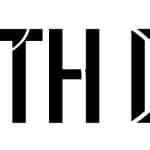This team-based draft strategy aims to identify which Indianapolis Colts are primed for fantasy opportunities. The series serves as an assessment of each offense and its prospects heading into next season. The stats used for this research are based on a half-PPR scoring format. Redraft rankings are listed for each player in parentheses (not that I like using parentheses).
Indianapolis Colts: No. 5 fantasy offense in 2018 (5th in passing, 20th in rushing)
The Colts have checked off both the prerequisites for elite offensive production: great coaching and elite quarterback play. Frank Reich turned the Colts into one of the most efficient offenses in the league last year, one that led the NFL in third down conversion rate and ranked 5th in red zone efficiency. Reich also led Philadelphia to second-place finishes in both stats in their championship season, proving proficient at earning conversions for the offense with savvy play-calling.
The ability to sustain long drives helped the Colts run the third-most plays in the league last year, which gives fantasy players more opportunities to be productive.
Most importantly for the Colts organization, Andrew Luck looked like his old self again. He was completely revitalized in Reich’s offense after missing the majority of three seasons with a shoulder injury. A big part of the equation was providing Luck with the best pass protection of his career. The Colts line ranked third in the league according to PFF, and it should be a dominant unit for years to come with rookies Quenton Nelson and Braden Smith showing out immediately. Luck (QB2) has finally been put in a position to succeed and the needle is pointing up on his career once again.
Another beneficiary of all that offensive line talent is Marlon Mack, who retained his starting role throughout the offseason. Mack was extremely efficient last year, posting 4.7 yards/carry and scoring the eleventh-most fantasy points/game among running backs. However, he’s had shoulder surgery, suffered two concussions, and two hamstring injuries since entering the league just three years ago. Mack (RB13) is in a great situation with a high risk of injury, which makes his backup an intriguing fantasy option as well.
Nyheim Hines (RB50) is currently expected to handle passing down duty in the offense with Spencer Ware and Jordan Wilkins competing for the backup role. The winner of that training camp battle could go from the roster bubble to winning people their fantasy leagues this year ala Damien Williams.

The Colts have receiving weapons all over the field and it all starts with speedster T.Y. Hilton. The seven-year veteran has established himself as one of the best deep-ball receivers in the league by developing a terrific rapport with Andrew Luck. Hilton is a virtual lock to surpass 1,200 yards in this offense, but he simply isn’t built to produce in the red zone. His lack of TD-production makes Hilton (WR10) a fringe-WR1 with relatively limited upside.
The Colts seem to think very highly of newcomer Devin Funchess. Reich spoke glowingly about him in March, which suggests he could use Funchess in a role similar to Alshon Jeffery’s in Philadelphia. Funchess created very little separation and struggled with drops in Carolina, but the Colts have proven successful at coaching up those skills in the past (see: Eric Ebron). Given their $10 million investment in him, Indianapolis should give Funchess (WR43) every opportunity to succeed and his 6’4” frame makes him an intriguing target in the red zone.
The Colts also added a dangerous slot weapon in drafting second-round WR Parris Campbell. Campbell is an athletic freak with 4.31 speed at 205 lbs, making him faster than Tyreek Hill with a bigger frame. He was also highly-productive in college, recording 90 catches for 1,000 yards and 12 TDs in his senior year at Ohio State. It could take time for Campbell (WR54) to earn playing time in an offense with so many established pass-catchers, but he has the skill and athletic ability to make an impact this season.
The only player hindered by the team’s offensive additions is TE Eric Ebron, who is coming off a breakout performance in 2018. He was Luck’s favorite target in the red zone last year, scoring 12 TDs on 22 red zone touches. His efficiency in that area of the field made him the TE4 despite finishing 16th in snap count among tight ends. That gaudy TD-production will be even tougher to replicate with the return of Jack Doyle (TE18), the arrival of Devin Funchess, and the potential emergence of Mo Alie-Cox. All signs point towards major touchdown regression for Ebron (TE7), who falls well behind tight ends O.J. Howard, Evan Engram, and Hunter Henry.






No Comment! Be the first one.